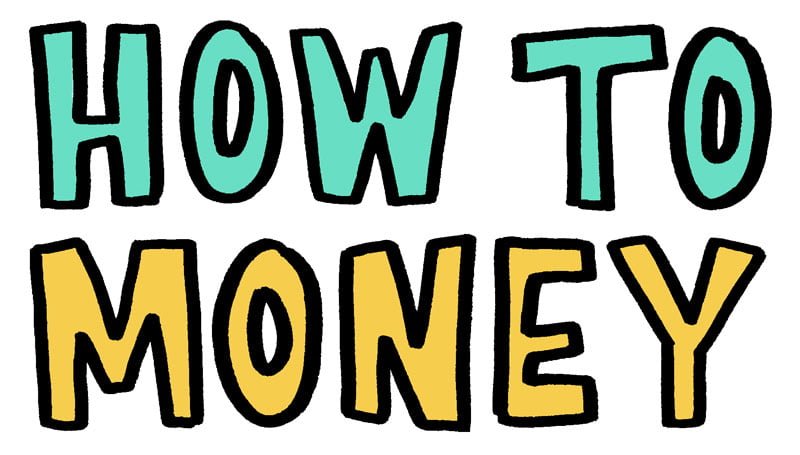Finding ways to save large chunks of money are few and far between. You can save $40 a month or more by switching your cell phone service. That’s obviously not an insignificant amount, but what if you’re aiming to save a whole lot more than that?
As total home equity soars to $21 trillion, one of the bigger levers that tens of millions of Americans can take advantage of right now in order to lower their expenses is refinancing their home. You could save hundreds of dollars every month in one fell swoop. That’s money you can use to beef up your savings or even to get started investing.
There are a lot of important details that you’ll want to consider before you call your bank to get the ball rolling though.
Key Takeaways:
- Even if you haven’t been in your house for very long, it could still be worth refinancing- especially if you’re able to drop PMI.
- Shopping rates with a company like Credible (NMLS #1681276) ensures you’re getting the best rate because they shop with multiple lenders on your behalf.
- Think twice before doing a cash-out refinance although it can be beneficial in some circumstances.
Refinancing Isn’t Right For Everyone
If you have an extremely low mortgage balance or only have a few years left on your mortgage, it likely makes sense to leave things be – even if your rate isn’t freakishly low like the rates we’re seeing now.
That’s because refinancing costs money. Those costs vary for many reasons but the average amount you’ll pay to refi is 2% of the loan balance. The application fee, appraisal fee, title fees and more will eat into the savings you could receive. If you’ve only got a couple of years left on that mortgage refinancing is likely a bad deal.
Related post: Is a house a good investment?
Look at Refinancing From a Holistic Perspective
It’s also important to note that the best refinance for you might not even lower your monthly mortgage amount. In fact, it might increase it. You might opt for a shorter loan term and a much lower interest rate. Refinancing into a 15-year loan instead of a 30-year might be best for your specific situation. That shorter term means less money paid in interest overall and getting out from under your mortgage sooner.
Even though you might not be saving money on a monthly basis it’s still a decisive victory to pay off your mortgage in a lot less time.
Tired of Paying PMI? Refinancing Can Help Eradicate It
Refinancing might also be the perfect opportunity to ditch PMI, or private mortgage insurance. Let’s say you bought a home a couple of years ago and are still paying PMI, refinancing can help you get out of paying mortgage interest each month in addition to scoring a lower interest rate. Since home prices have soared over the last few years most homeowners shouldn’t have a problem getting their home appraised to a value where PMI is no longer necessary.
If you are able to complete the double whammy of grabbing a lower rate and axing PMI then refinancing makes even more sense for you. Some borrowers could find themselves saving $400 or more each month in one fell swoop.
Make Your Own Finances Sparkle
Speaking of personal factors, it’s important to make sure that you have your own ducks in a row before you get started with the refinance process. For instance, if you don’t know what your credit score is you’ll want to get on that stat. My favorite site to check my credit score for free is CreditScoreCard.com.
A helpful score worth shooting for is anything above 740. If you can get your score above that mark you are likely to qualify for the best possible rates and terms with most lenders.
And by the way, perfection isn’t necessary so don’t waste your time trying to achieve the impossible. But do make sure that you pay special attention and try to boost your credit score. A subpar score can cost you thousands.
The Savings Could be Gargantuan
Mortgage interest rates have been dropping like a rock. If you haven’t done a refi on your mortgage in the last couple of years, you stand to benefit in a big way. The average refinance amount is just north of $350,000 these days.
At that loan amount, if you’re able to drop your loan by one percentage point, you’ll be saving almost exactly $200 a month. That’s quite a bit of money back in your budget every month!
Not everyone reaps savings like that from a refinance though. Much of that math has to do with how long you plan on staying in the home and how much the closing costs will be.
For example, if your current interest rate is 4% and you can refinance into a new loan at 3%, there’s a good chance that refinancing is the right move for you, assuming you plan to live in the home for years to come. But if the lowest rate you qualify for is 3.5% then the chances that refinancing makes financial sense are greatly diminished.
Your Specific Situation Might Vary
Personal finance is, well, personal. So it’s important to think about your individual situation before you opt for a big financial move like a refinance, no matter how wonderful the headlines make refinancing sound.
Again, if you don’t plan on staying in the home much longer it doesn’t matter if you can score an interest rate drop of three percentage points. You’ll still take a financial hit.
You should also consider your own specific money goals. If you are prioritizing mortgage debt payoff and plan on being rid of that debt altogether in the next few years, refinancing won’t be of much help. Direct all of your brainpower and extra income toward that goal instead of pursuing a refinance.
Shopping Around Is Crucial to Scoring the Best Terms
This article is about refinancing in order to save the most money. That’s only possible if you are a smart consumer.
Mortgage rates are still close to record lows. But refinancing costs can vary an awful lot from lender to lender. Even if shopping around isn’t normally your thing, it’s more crucial than usual because the potential savings are so much greater.
Credit unions are a great first place to look. If you are a member of your local credit union, check to see what current rates they are offering.
The quickest and easiest way to shop for rates is on a site like Credible (NMLS #1681276). They will compare rates with quite a few of the online lenders. It’s their goal to find you the best deal with the least amount of hassle. For most folks it makes a whole lot of sense to fill out this simple form in order to get a quick sense of what the best online lenders are offering in terms of rates and fees.
Here’s one thing you should never do – drive down to the nearest branch of one of the big banks and apply for a refi there. Wells Fargo, Bank of America and Chase aren’t competitive in the mortgage refi space anymore. At all. You’ll end up substantially overpaying. Don’t do it.
Consider Paying Discount Points
Once you have a few quotes in hand, compare them. They can be difficult to compare exactly though because each loan option might have a different “discount point” attached to it. Discount points are essentially prepaying interest on your mortgage.
This NerdWallet calculator can help you make an informed decision about whether it makes sense to buy points or not. Check the breakeven period because the longer you keep the mortgage the more it might make sense to buy points.
Be Careful Before Taking Cash Out
We’re in the middle of a cash-out refinance boom. As home values soar, more and more people are opting to take money out of their home. Is that wise? It depends.
Using your home as a piggy bank in order to increase your consumption is a terrible idea. Borrowing against your home to buy a new car or take a month-long vacation could lead to severe financial issues for you down the line.
Doing a cash-out refinance does make sense if you are using that money to make home improvements. You won’t see a dollar for dollar return on what you’re spending but it is a legitimate use of a cash-out refi.
Tapping that equity in order to invest, on the other hand, can make sense if done prudently. Using your equity as leverage to buy a rental home or to be able to max out tax-advantaged retirement accounts means that money you’ve borrowed cheaply is working harder for you. And there’s extra temptation to pursue that route when you can lock in a rate below 3% currently.
But here’s the thing, you’re also assuming additional risk. If you take money out of your home and have trouble paying the mortgage you could be at risk of foreclosure. While it sounds nice to borrow money at 3% and stick that money in index funds averaging an 8% return, it isn’t without legitimate hazard.
The Bottom Line on Refinancing To Save Money
Mortgage rates are still hovering near all-time lows. Millions of folks stand to benefit from refinancing their home in order to lower their interest rate and monthly payment. It can be a huge boon for your personal finances, giving you extra breathing room. That additional financial margin can allow you to save and invest more!
But here’s the deal, it’s crucial to know whether or not refinancing makes sense for you based on your current loan terms and your likely ownership timetable. Get your ducks in a row when it comes to your credit score too. That will majorly impact the benefits of refinancing…or lack thereof. And don’t forget to shop around with multiple lenders in order to save the most.
*Please be advised that the operator of this site accepts advertising compensation from companies that appear on the site, and such compensation impacts the location and order in which the companies (and/or their products) are presented, and in some cases may also impact the rating that is assigned to them.





